Bruce Morrison is a working artist and photographer living with his wife Georgeann in rural southeast O’Brien County, Iowa. Bruce works from his studio/gallery–a renovated late 1920s brooding house/sheep barn. You can follow Morrison on his artist blog, Prairie Hill Farm Studio, or visit his website at Morrison’s studio.
False Gromwell (Onosmodium molle occidentale), sometimes known as Western Marbleseed, is often overlooked, yet common in Iowa. The range map in An Illustrated Guide to Prairie Plants, by Paul Christiansen and Mark Muller, shows it in at least half of our counties. It’s likely much more common than that.
I find it mostly in dry to gravelly hillsides or upland prairie and even roadsides. I suspect Iowa’s western counties are the most reliable hosts for the native forb.
I remember the first time I saw false gromwell. it was here in southeast O’Brien County along side a dirt road abutting a small natural area donated to the county by a local landowner. I noticed the plant, not the flowers (it was well past their latest blooming time of mid-July). This plant’s leaf structure is really quite attractive—or at least the form and stature are attention getting.
I had no idea what it was, but was determined to find out! This was years before online sources or searches; without a flower to go by, my books weren’t much help.
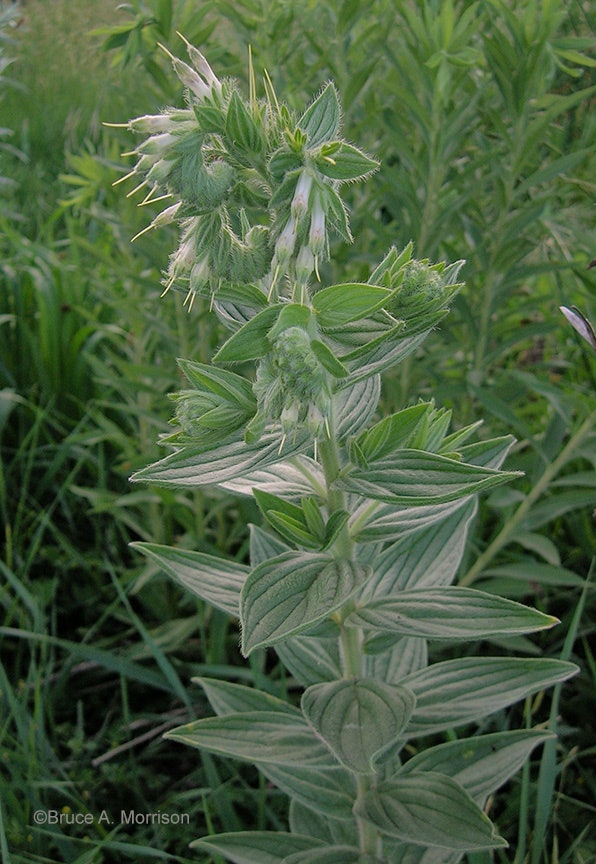
Eventually I did figure out what I was seeing, and I found this native prairie wildflower in various stages of vigor—from a single stalked plant like the image seen above, to fairly tall and bushy specimens.
The plant I first saw was at least 3 feet tall with several stems rising from one common root crown. The leaves are a grayish green, attributed to the dense covering of hairs. The leaves (2 inches or slightly longer) are oval in shape, tapering to both ends, and alternating, with several deeply expressed veins. They are quite sturdy and pronounced visually; leaves are without petioles.
Years later, after moving to our acreage and pastures, I collected seed from the plants in our “neighborhood.” One thing I found is they can take some time to “show up.” Then before you know it, it’s everywhere!
Kind of reminds me of compass plant (Silphium laciniatum) in that regard—don’t get too carried away, it will do that on its own. I later read that false gromwell seeds can lay on the ground for several years without germinating, so ya, patience.
When the plant is first coming up, the leaves are noticeably narrower than when full grown. You’ll notice the three distinct stems in this image, which shows an older plant with a growing root crown. I’ve never even toyed with the idea of digging one up and transplanting. First, it’s too easy to plant by seed. Second, they have got to have a substantial root.
The coarse hairs on the stems and the tell-tale grayish green hue of the leaves help identify it in its early stage of growth in May.
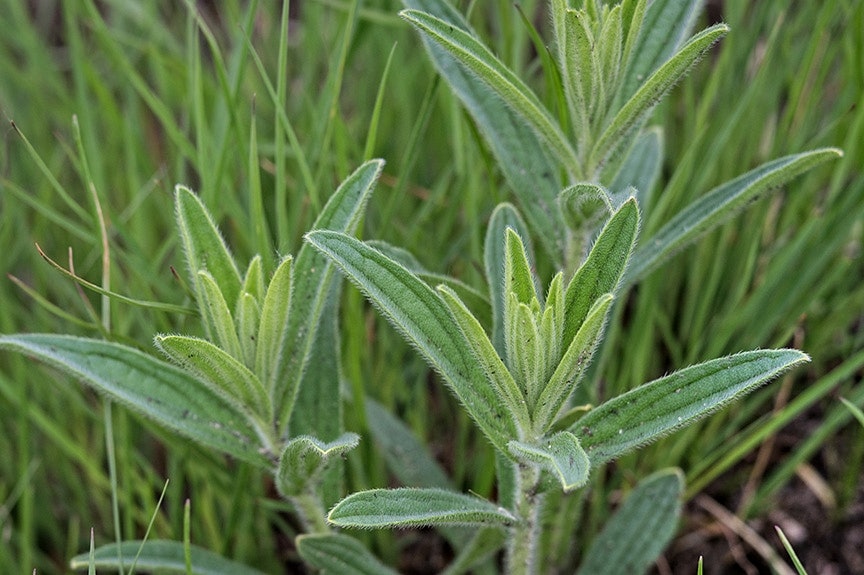
Here we see the tip of the single stalk beginning to show the future flower structure to come – typically in late May to mid June at this point.
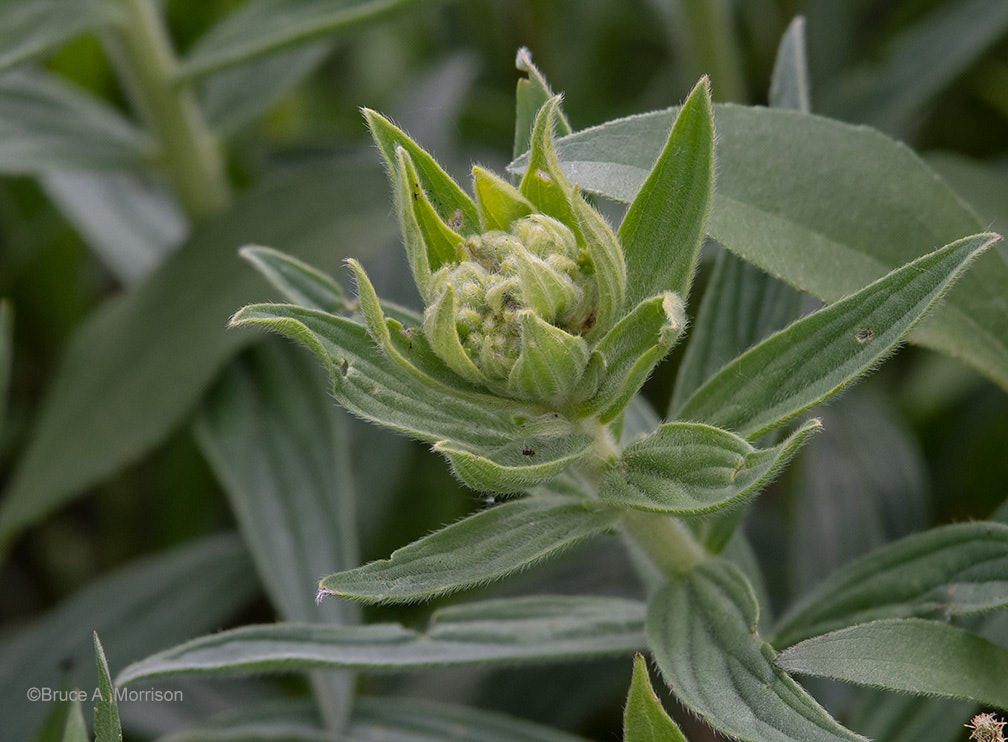
False gromwell is from the Borage family (Boraginaceae). Typical of Borage, the inflorescence is along the outer side of a nicely curved spike. There can be more than one spike per stalk; in this next image we see the first flowers just starting to “bloom.”
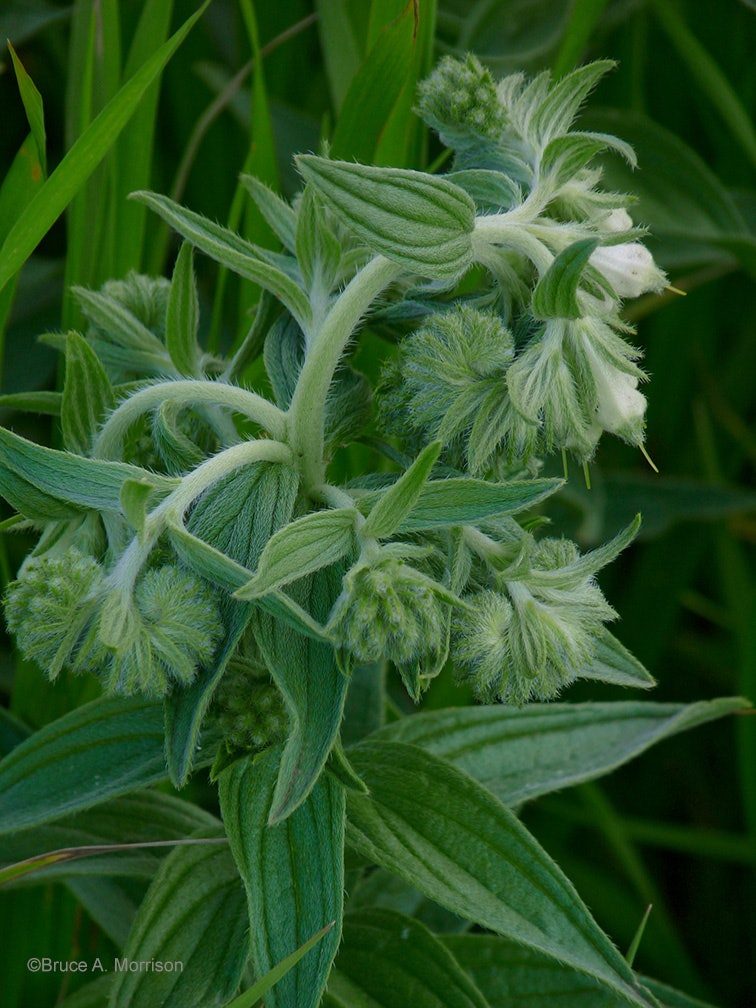
I find false gromwell flowers to be extremely interesting and I think “beautiful” in their own understated or unique way. They can be greenish white to yellowish white. The whitish corolla is tubular with a long pointed stigma protruding through.
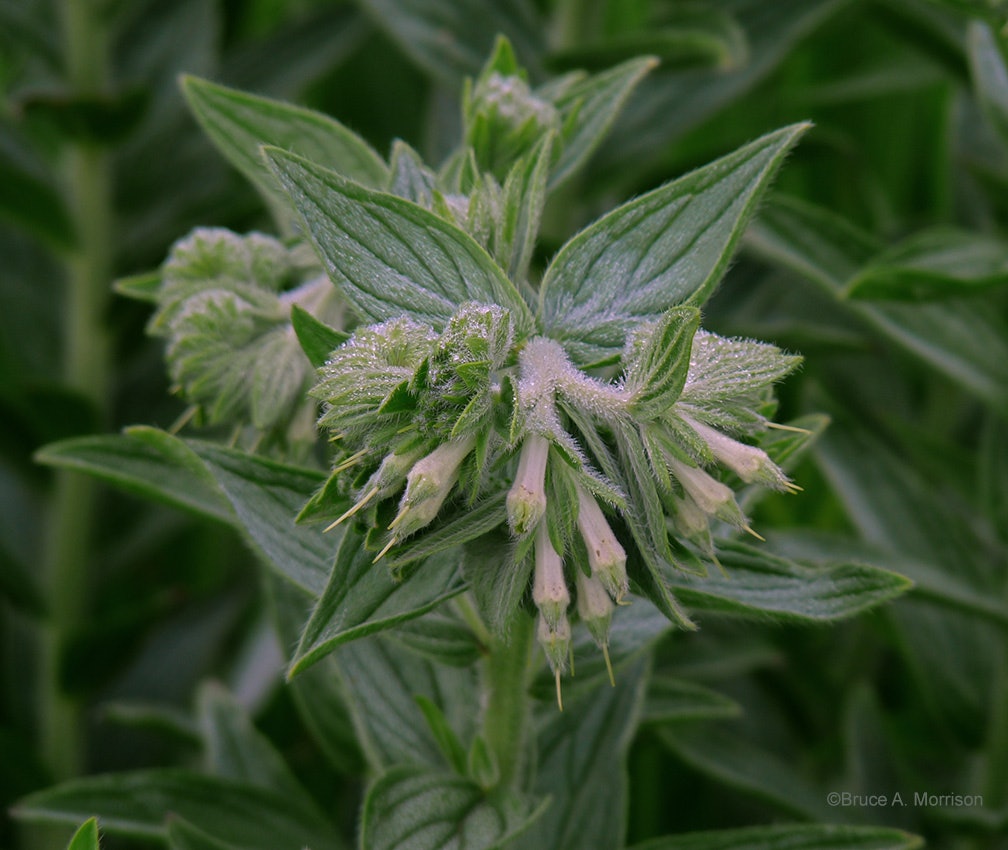
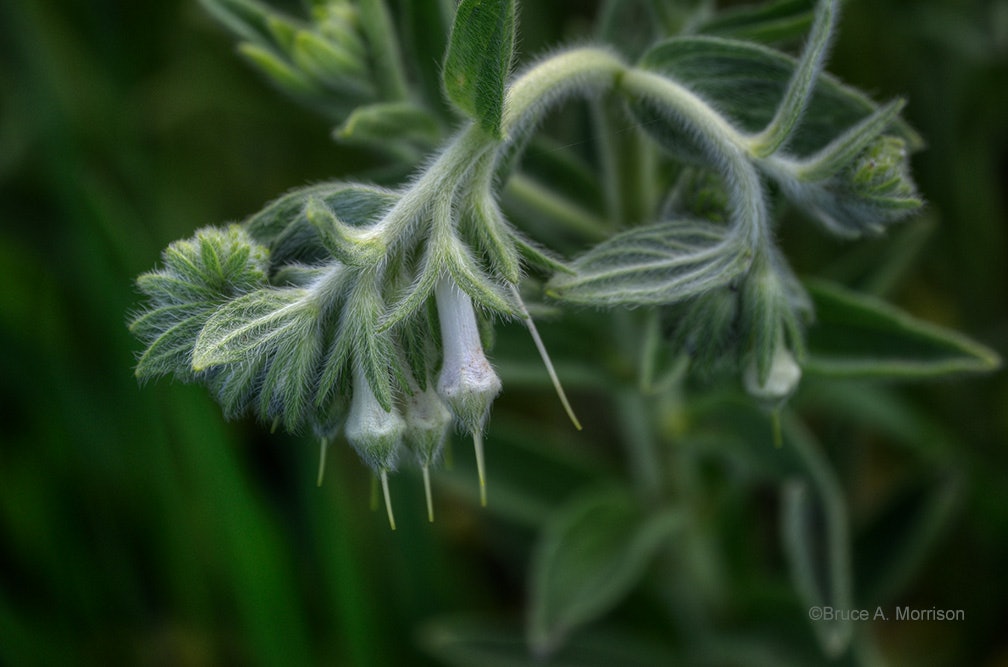
According to Wildflowers of the Tallgrass Prairie by Sylvan Runkel and Dean Roosa, “the flower is fertilized and reproduction completed before the flower opens it’s corolla.” I’d say (just my lay opinion) that this is likely already taken place on the center “corolla-less” flower in this image directly above. There is no noticeable floral scent.
The next image shows more fertilized and unfertilized flowers.
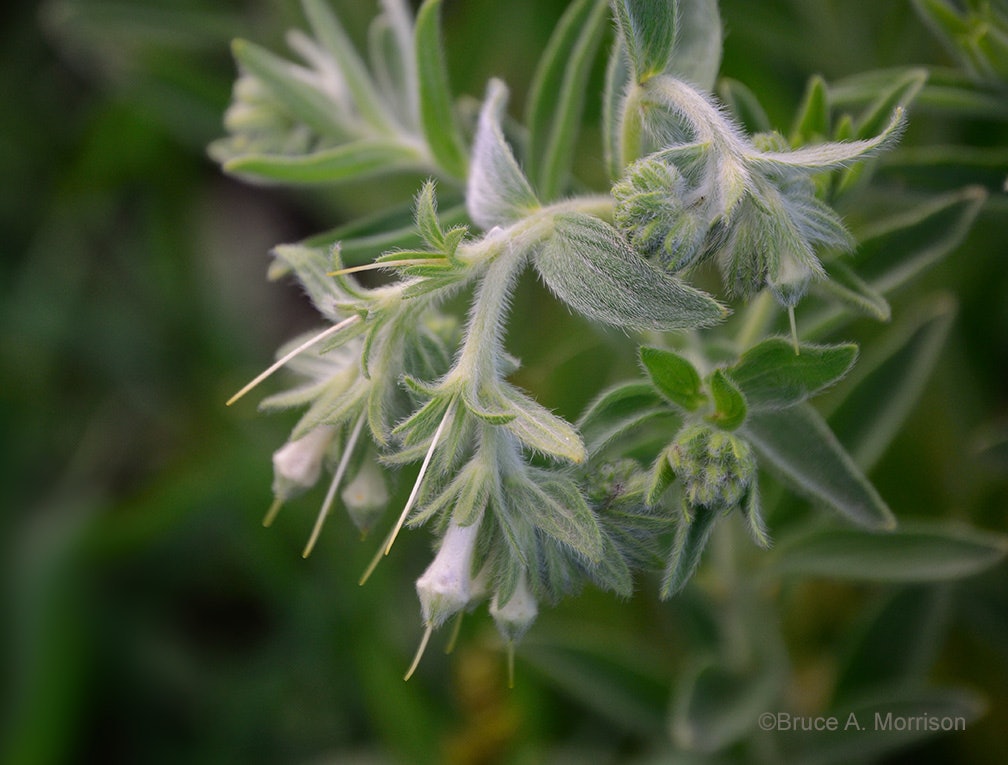
On our pastures, I have observed bumble bees as the most common pollinator of false gromwell, but have seen ants and other bees visiting them as well. I’ve also read that true bugs are also known pollinators.
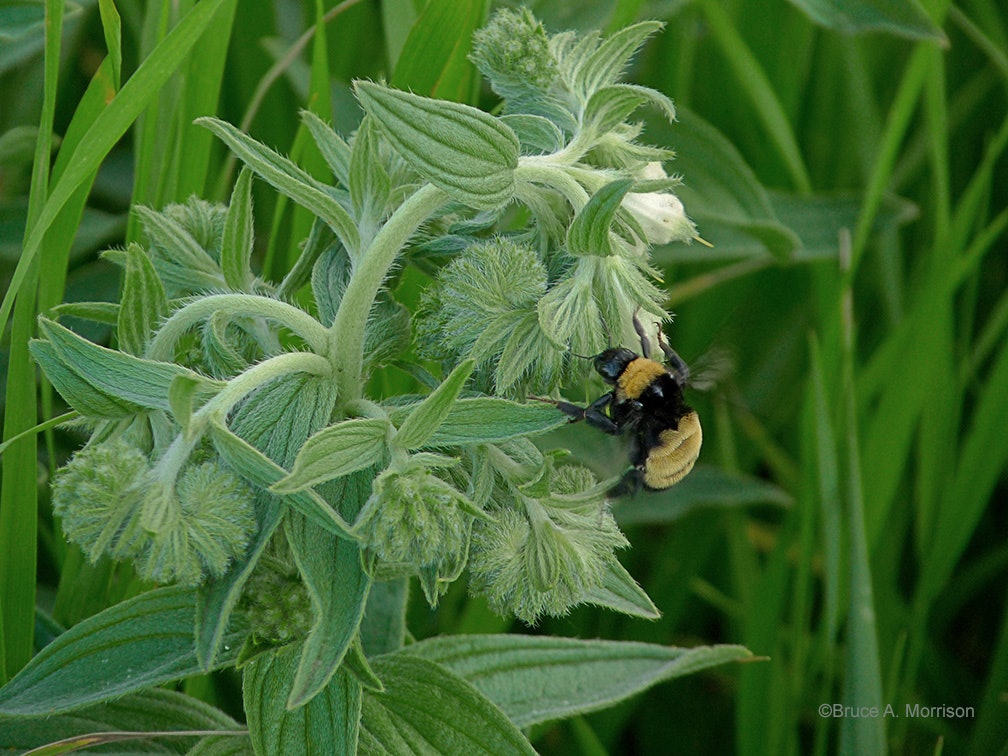
In this next image, an invertebrate can just barely be seen behind a leaf above the bee. Perhaps another pollinator?
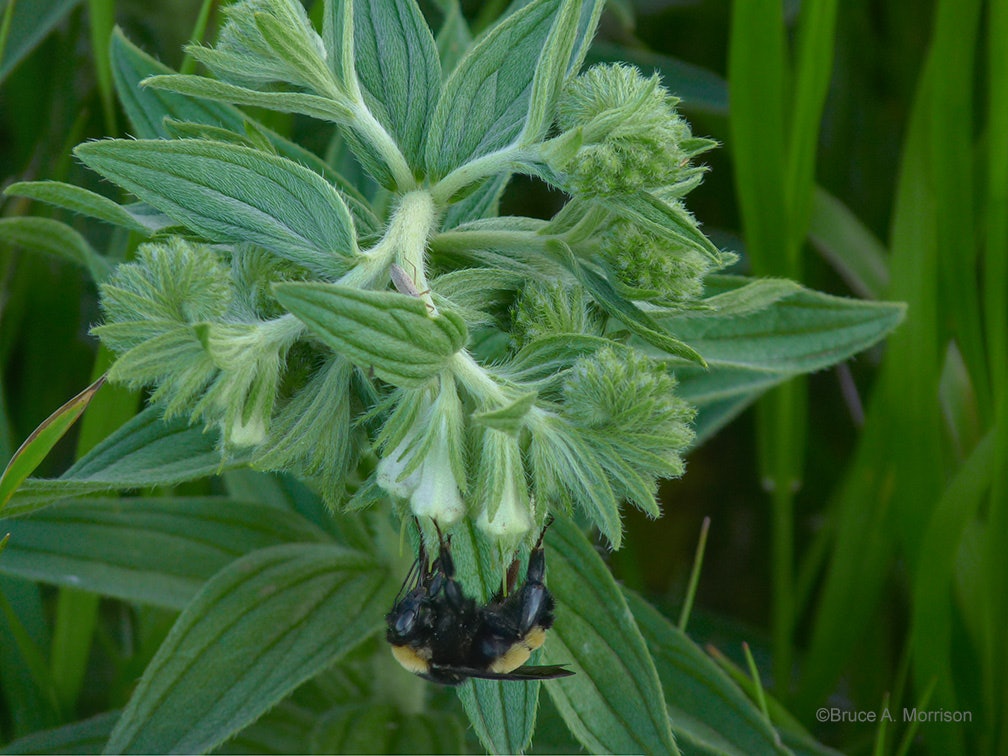
The seeds (nutlets) begin forming after mid summer. Some sources say that each flower can produce four nutlets—sometimes less or even none.
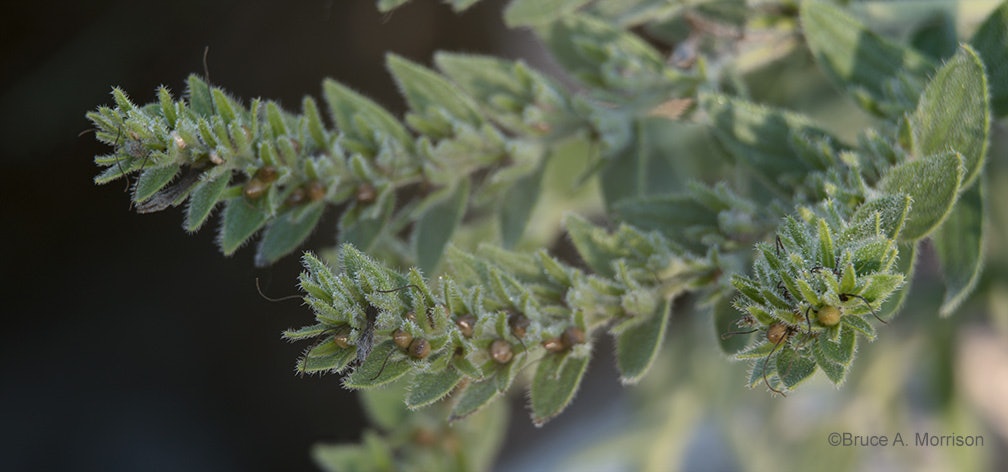
The nutlets are kind of oval in shape and very hard, giving rise to the plant’s other common name, “marbleseed.” The seed starts out with a tannish color, later turning almost an ivory white.
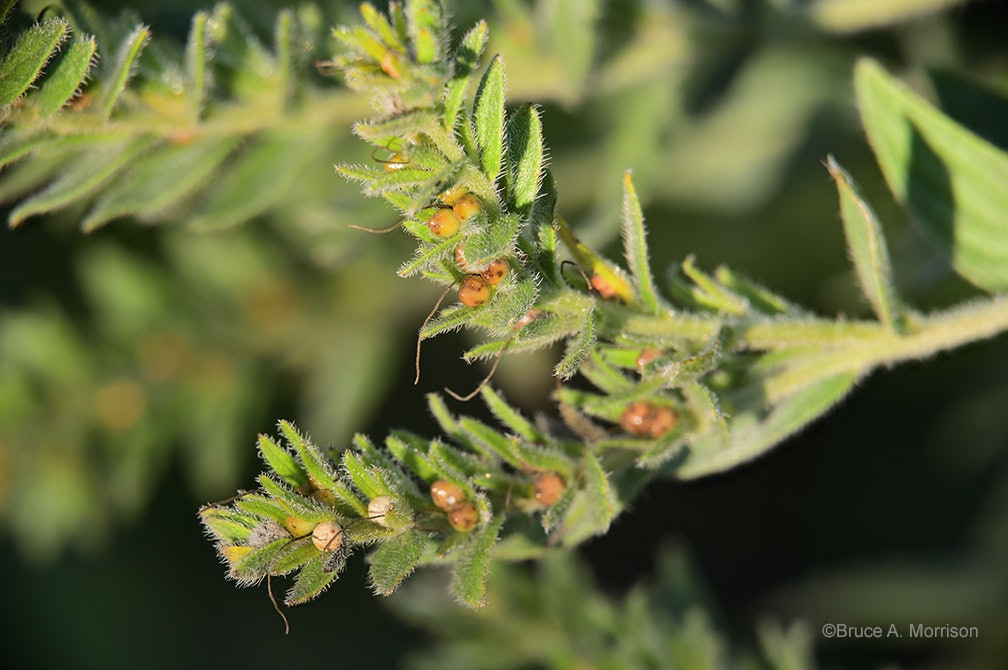
I have collected the seed as soon as it readily falls off. Often the seeds haven’t quite reached the ivory coloration, yet they still seem viable for sowing.
Here you can see the dried flower stalks in September. Seed falls off very readily (note the missing seed evidenced by the small dark broken connections along the stems). Notice a size illustration for False Gromwell seed below.
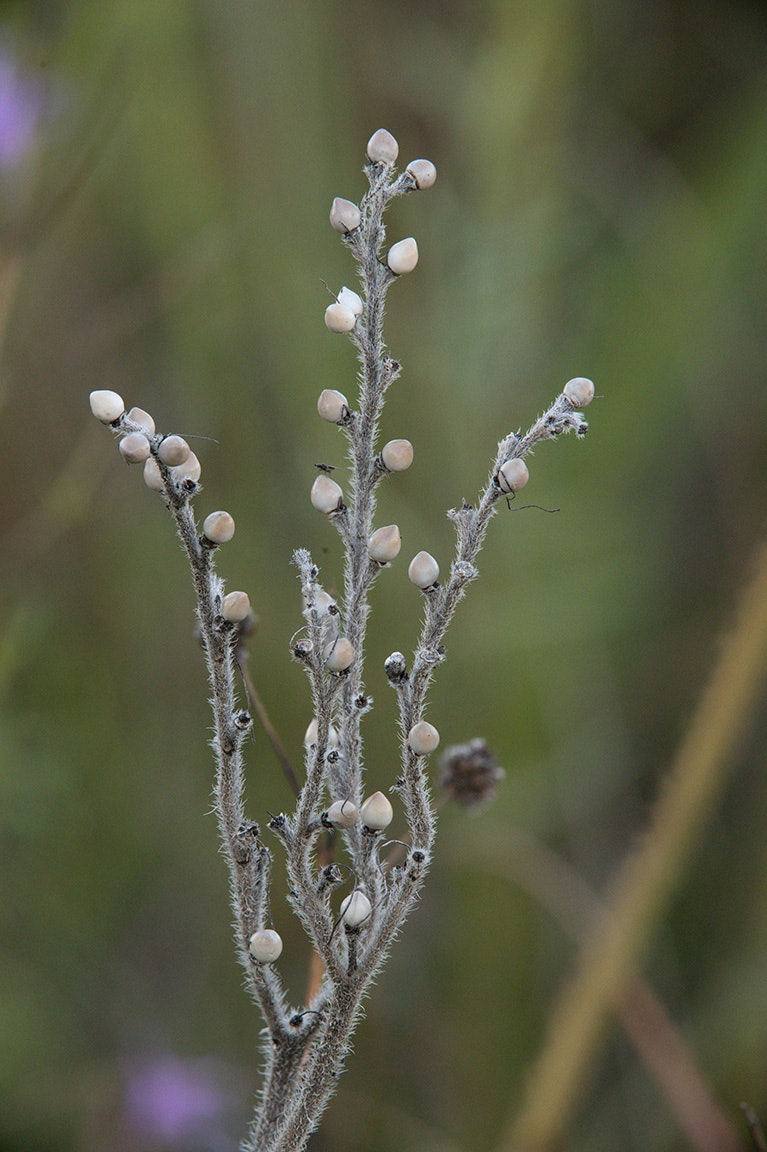
Next to a dime, for size comparison.
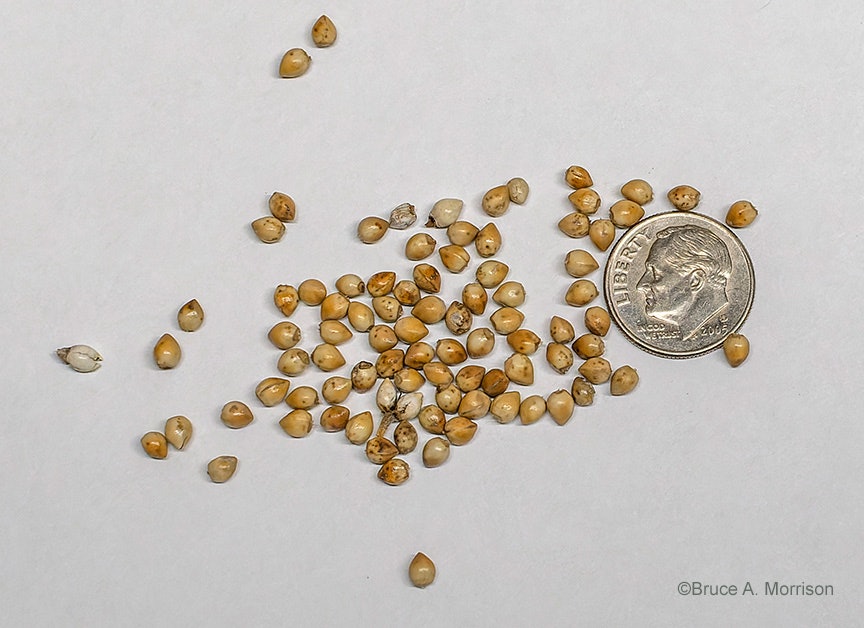
I would guess that false gromwell’s unpalatable coarse and hairy stems and leaves are why it is rarely grazed. I have never found this plant browsed here by rabbits, deer…or anyone! Maybe some insect damage, but really a plant with few issues of predation.
I have read that leaf miners, flea beetles, stink bugs, and our familiar painted lady butterfly larva can feed on the leaves. Gee, no wonder we have so many painted ladies here!
One last, quirky note. I have read in more than one place, and heard from others, that when this plant is soaked in a heavy rain, it can smell like a wet dog or mule. I don’t have a dog to compare with and definitely absent any mules here, but I did take the liberty of giving them the “sniff test” many years back. I wouldn’t recommend doing it on a regular basis.
I’m glad I don’t notice the smell as a casual observer and false gromwell fan club member.

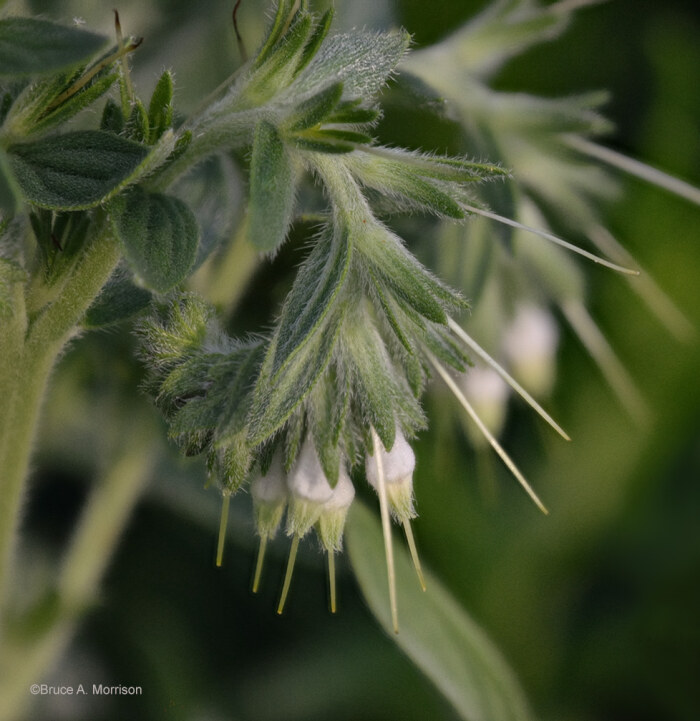
1 Comment
Thank you for these photos, I love this flower.
To be honest, I’ve never met a native prairie plant that I didn’t at least very much like:-). But I love false gromwell, and it’s not hard to grow.
I have seen monarch butterflies on false gromwell, and I remember reading somewhere, years ago, that monarchs collect chemicals from the false gromwell that help them repel predators. I can’t find that source and don’t know if it’s true.
I do know that this species is generally not liked by cattle and other human livestock. Finding it on a pasture, along with other native prairie species (like hoary vervain) that can also withstand livestock grazing, is a sign that the pasture may be a suppressed-prairie pasture. Many more prairie species may reappear with good management.
That has certainly happened to a number of pastures in Iowa. I’ve seen pastures after fire and other management enabled suppressed prairie plants to pop up and bloom. Some are now “WOW!” prairies.
I also heard stories years ago about previously-never-plowed Iowa pastures, almost certainly prairie pastures, that were plowed up and turned into driveways, ponds, tree and shrub plantings, fill dirt sites, rural houses, and even poor-quality Conservation Reserve Program “prairies.” That was sometimes done even by well-meaning Iowans who cared about conservation. I hope and assume that is far less common now.
PrairieFan Wed 7 Jun 8:53 PM